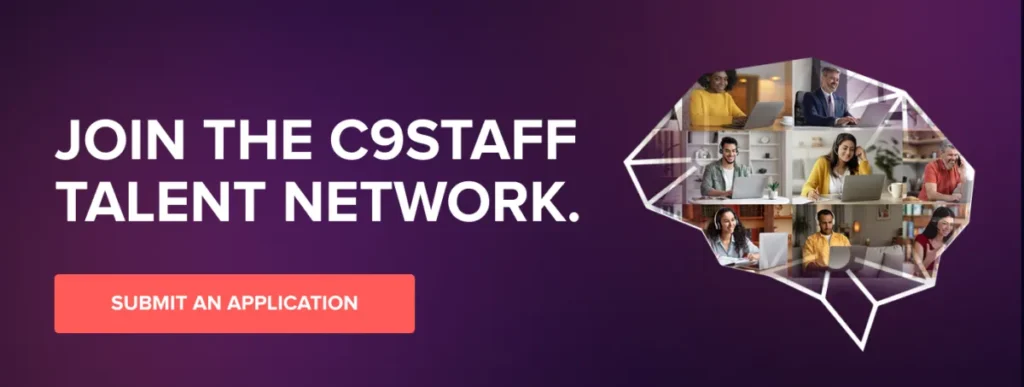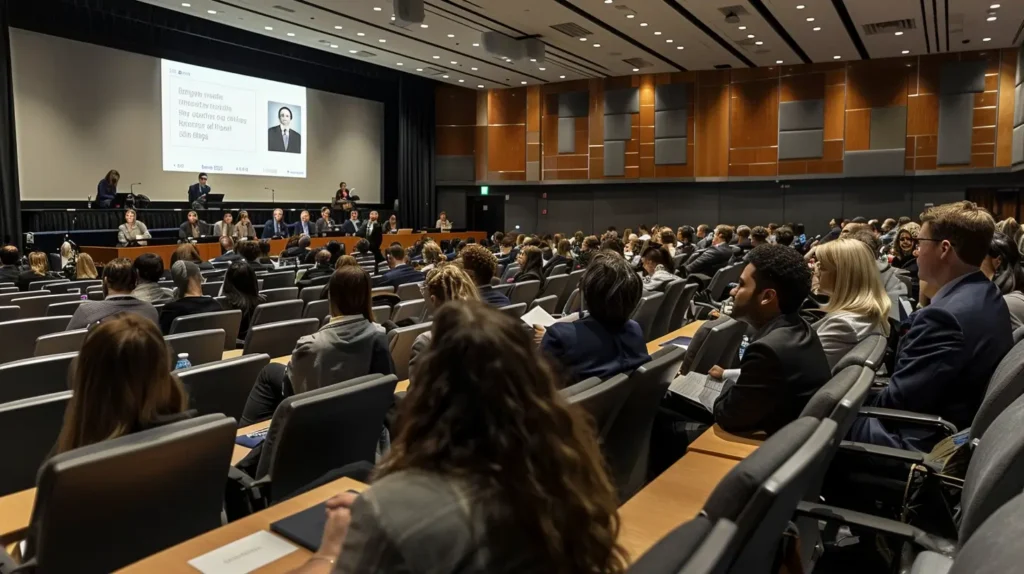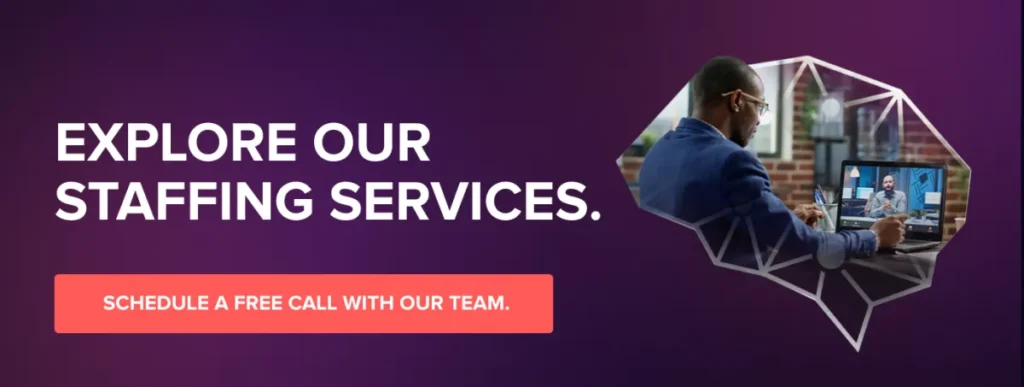Introduction

Welcome to the “Comprehensive Guide to Crafting and Understanding Customer Service Representative Job Descriptions,” a resource meticulously designed to serve a dual purpose. For employers, this guide is your blueprint for constructing precise and compelling job descriptions that not only draw in the right candidates but also reflect the dynamic nature of the customer service industry. A well-drafted job description is pivotal—it attracts skilled professionals and significantly diminishes the likelihood of hiring mismatches, thereby enhancing your recruitment strategy and fostering a more efficient workplace.
If you are in search of the ultimate job description template for a Customer Service Representative to use as a foundation for your own specifications, we have just the resource for you. Click the link below to download our complimentary template, which is meticulously designed incorporating the fundamental principles and best practices of C9Staff’s hiring methodology. This template will guide you in crafting a job description that is not only thorough but also tailored to attract the most qualified candidates for your organization.
customer service representative Job description template

Conversely, for job seekers, this guide demystifies what to expect from roles as customer service representatives. Whether you are initiating your career journey or seeking a career transition, understanding the nuances of these job descriptions will empower you to tailor your applications more effectively. It will also help you set realistic expectations about the responsibilities and growth opportunities within such roles, ensuring you are well-prepared for what lies ahead.
Precision and clarity in job descriptions are not merely administrative details; they are the cornerstones of organizational success and individual career development. These elements ensure that every party—employers and potential employees alike—has a clear understanding of the expectations and requirements, which in turn fosters a more aligned and productive work environment.
As we dig deeper into this guide, we invite you to engage with each section, whether you are drafting a job description that captures the essence of the role and your company culture, or you are a candidate seeking to understand where your skills and ambitions fit within the customer service industry. This guide is crafted to bridge the gap between employers’ needs and job seekers’ aspirations, serving as an essential toolkit for navigating the complexities of employment in customer service.
Join us as we explore these facets in detail, providing you with invaluable insights and tools to enhance your approach, whether you are hiring for or stepping into a customer service role. Engage with this guide to not just meet but exceed the standard benchmarks of the industry, setting a new precedent for success in your professional endeavors.
Inside the Clock: A Day in the Life of a Customer Service Pro | Indeed
What is a Customer Service Representative

At the heart of any business that values client satisfaction and strives for service excellence is the Customer Service Representative (CSR). The primary responsibilities of a CSR include addressing customer inquiries, solving problems, and providing efficient assistance. CSRs are the frontline agents who ensure customers feel valued, complaints are resolved promptly, and services are delivered efficiently, thus safeguarding the company’s reputation and contributing to its financial health through customer retention and loyalty.
The role of a customer service representative, however, is not one-size-fits-all and varies significantly across different industries. Each sector tailors the responsibilities of its CSRs to meet specific needs, challenges, and customer expectations.
In Retail, the CSR is often seen on the shop floor or behind a customer service desk, handling returns, assisting with product location, and managing complaints or queries about services. Here, the emphasis is on direct, personal interaction and the ability to handle multiple requests in a fast-paced environment.
In Technology, customer service representatives take on a more specialized role. They require a strong understanding of the products and services offered, including software or hardware troubleshooting, assisting with installations, or providing usage guidance. This sector values technical knowledge highly, along with the ability to communicate complex solutions clearly and succinctly to non-technical customers.
In Healthcare, CSRs must navigate a landscape of emotional and sensitive interactions, often dealing with patients’ health and personal data. Responsibilities here include scheduling appointments, handling billing inquiries, and providing information on medical procedures and policies. The ability to handle sensitive information with empathy and discretion is paramount.
By understanding the nuances of these roles across various industries, we see how the core skills of communication, problem-solving, and customer engagement adapt to meet specific industry requirements and challenges. This variability not only highlights the versatility and critical nature of customer service roles but also underscores the importance of targeted job descriptions that reflect the specific needs and challenges of each sector.
This section bridges the general role overview to deeper explorations into crafting effective job descriptions and developing role-specific skills in subsequent sections of this guide. Our aim is to equip you with a comprehensive understanding of what it means to be a customer service representative, how this role shifts across different contexts, and why it remains a vital element in the structure of any business focused on customer satisfaction.
For Employers: Creating an Effective Job Description

Creating a job description that is both compelling and inclusive is vital to attracting the right candidates for the role of a Customer Service Representative. It’s not just about listing the needs of your company; it’s about communicating the heart of your business and the essence of the role in ways that resonate with potential applicants. Here’s how to make sure your job descriptions stand out and attract the best talent.
Key Components of a Job Description Every effective job description should clearly include the job title, essential responsibilities, necessary qualifications, and required skills:
- Job Title: Make sure the title is clear and reflects the actual role responsibilities. Avoid jargon unless it is industry accepted.
- Essential Responsibilities: List out what the employee will do daily. Be specific to avoid any misconceptions about the role.
- Necessary Qualifications: Specify educational background, certifications, and any other legal requirements for the role.
- Required Skills: Highlight both soft skills (like communication and problem-solving) and technical skills necessary for the role.
Writing Best Practices The tone and wording of your job description can significantly influence the type and diversity of candidates who apply:
- Professional Yet Welcoming Tone: Use a tone that reflects your company’s culture. It should be professional but not so laden with corporate speak that it becomes impersonal.
- Reflect Company Culture: Express your organization’s values and mission. Candidates often look for roles where they can align personally and professionally with their employer.
- Inclusivity in Wording: Use language that encourages diversity. Ensure that the phrasing does not unconsciously deter any group from applying.
SEO Strategies for Job Descriptions Enhancing the visibility of your job postings through effective SEO practices is crucial:
- Relevant Keywords: Include keywords that potential candidates are likely to search for. Use tools like Google Keyword Planner for guidance.
- Keyword Placement: Position your keywords strategically throughout the job description—title, first paragraph, and a few throughout the body without stuffing.
- Frequency of Keywords: Ensure a natural flow of text while subtly incorporating keywords. Overuse can lead to penalties from search engines.
Strategic Value of Effective Job Descriptions A well-crafted job description is more than an HR task; it is a strategic element of your business planning. It ensures that you attract the right talent who are not only capable of fulfilling the role’s requirements but are also aligned with your corporate culture, significantly reducing turnover and fostering a team capable of driving customer satisfaction and business success.
If you are in search of the ultimate job description template for a Customer Service Representative to use as a foundation for your own specifications, we have just the resource for you. Click the link below to download our complimentary template, which is meticulously designed incorporating the fundamental principles and best practices of C9Staff’s hiring methodology. This template will guide you in crafting a job description that is not only thorough but also tailored to attract the most qualified candidates for your organization.
customer service representative Job description template

Mastering Customer Service Interviews: Top 10 Questions and Winning Answers | Indeed Career Tips
For Job Seekers: Decoding Job Descriptions
Navigating the job market as a potential Customer Service Representative requires more than just skimming through job listings. It’s essential to decode job descriptions thoroughly to understand the full scope of what employers are seeking. This section will equip you with strategies to interpret and respond to job descriptions effectively, enhancing your chances of landing your desired role.
Understanding Job Responsibilities First, when reviewing a job description, it’s crucial to look beyond the listed responsibilities to gauge the underlying expectations. For instance, terms like “fast-paced environment” or “team-oriented” hint at the workload and the company’s culture. Pay close attention to phrases that suggest high volume or high stress; understanding these subtleties will help you assess if the environment aligns with your work style and career goals.
Matching Skills with Job Requirements Each job description provides a list of required skills and qualifications. Compare these with your own skillset by creating a checklist of their requirements and marking those you meet. If gaps exist, consider short-term courses or workshops to build those skills. Platforms like LinkedIn Learning and Coursera offer targeted training that can quickly elevate your proficiency. This self-assessment will not only prepare you for application but also help in personal career development.
Tailoring Your Application Customizing your resume and cover letter is paramount. Start by integrating keywords from the job description into your application documents. This practice aligns your resume with the same language used by the employer, increasing the likelihood of passing through Applicant Tracking Systems (ATS). More importantly, showcase how your specific experiences and skills make you an ideal fit for the role. Highlight achievements that correspond directly to the job’s requirements and demonstrate your potential value through real-world examples of your work.
Strategic Application Process Approach each job application as a unique project. Tailor every submission to meet the specific job description, emphasizing your relevant skills and experiences. This personalized approach shows prospective employers your genuine interest in the role and distinguishes your application from others.
Ready to take your career to the next level? C9Staff is here to help you find your dream job. By clicking the link below and submitting your resume to our talent acquisition department, you’re opening the door to new and exciting opportunities. If your qualifications align with our client’s needs, we will contact you to explore potential job matches that best fit your skills and aspirations. Don’t miss out on this chance to advance your career—submit your resume today and let us connect you with leading employers.

Essential Skills and Qualifications for Customer Service Representatives

In the dynamic world of customer service, the effectiveness and success of customer service representatives (CSRs) hinge significantly on a robust set of skills and qualifications. Understanding and developing these capabilities can set the foundation for a thriving career in this field.
Core Skills Required for Customer Service Representatives
- Interpersonal Skills: Exceptional interpersonal skills are non-negotiable for CSRs. These include the ability to communicate clearly and empathetically, ensuring customers feel heard and supported. Effective communication helps in diffusing tense situations and fostering a positive interaction, regardless of the customer’s mood or the complexity of the issue.
- Technical Skills: In an increasingly digital world, CSRs must be adept with technology. Whether it’s navigating customer relationship management (CRM) software or troubleshooting basic tech issues, technical proficiency can significantly enhance the efficiency and quality of customer service.
- Problem-Solving Skills: The essence of customer service is resolving issues. Strong analytical skills that allow a CSR to effectively identify problems, think critically, and devise timely solutions are crucial. This skill is particularly important when handling complex customer inquiries or when a first-call resolution is not feasible.
Desirable Qualifications for Enhanced Career Prospects
- Educational Background: Degrees or diplomas in communication, business administration, or related fields can provide a solid foundation for a career in customer service. Such education typically offers critical thinking skills and an understanding of business operations, which are invaluable in customer service roles.
- Certifications: Industry-specific certifications, such as a Certified Customer Service Professional (CCSP) or Technical Support Specialist, can distinguish a candidate in the job market. These certifications demonstrate a commitment to the profession and a mastery of key skills.
- Relevant Experience: Prior experience in customer-facing roles, especially those that require crisis management, is highly advantageous. Experience can range from frontline retail positions to more specialized roles in call centers or tech support, each contributing uniquely to a CSR’s capability.
Acquiring and Enhancing Skills
For those looking to enter or excel in customer service, numerous paths can help develop these essential skills:
- Online Platforms: Websites like Coursera or Udemy offer courses specifically tailored to customer service skills, from basic communication tactics to advanced technical support training.
- Workshops and Seminars: Local seminars and workshops can provide hands-on experience and networking opportunities that are beneficial for career growth.
- Higher Education: For those considering a deeper dive, higher education institutions offer programs in communications, business management, and other relevant fields that can significantly enhance a CSR’s qualifications.
Trends in Customer Service
The landscape of customer service is undergoing transformative shifts, driven by advances in technology and changes in workplace dynamics. Two of the most significant trends reshaping this field are the integration of artificial intelligence (AI) and machine learning, and the increasing prevalence of remote work. These developments are not only revolutionizing current practices but are also setting the stage for future roles in customer service.
Impact of AI and Machine Learning
AI and machine learning are dramatically changing how customer interactions are managed. Automated technologies, such as chatbots and virtual assistants, are now common first points of contact for many customers. These tools handle routine inquiries efficiently, allowing human agents to focus on more complex issues. For instance, AI-driven chatbots can resolve simple queries like “What is my balance?” or “How do I reset my password?” without human intervention. This shift has not only led to improvements in customer satisfaction due to faster response times but also requires customer service representatives to develop new skills, particularly in managing AI tools and interpreting their outputs to provide further assistance.
Shift to Remote Work
The shift towards remote work has had profound implications for the structure of job descriptions and candidate expectations in customer service. This trend has necessitated skills in digital literacy, self-management, and remote communication, becoming crucial for success in modern customer service roles. Remote work has expanded the talent pool, enabling companies to hire from a broader geographic area, which intensifies competition among job seekers. It has also led to a reevaluation of job descriptions, with a greater emphasis on traits that support autonomy and accountability.
Preparing for Evolving Roles
As these trends continue to evolve, it is essential for both companies and job seekers to stay informed and adaptable. For companies, understanding these trends will help in structuring job descriptions that attract candidates who are not only skilled in traditional customer service competencies but are also proficient in new technologies and comfortable working remotely. For job seekers, there is a clear incentive to upskill in technology handling and remote work capabilities. Pursuing certifications in new technologies and participating in training programs can enhance employability in a rapidly changing job market.
Real-Life Examples and Expert Insights

In the dynamic field of customer service, the art of crafting precise job descriptions and the science of developing informed job-seeking strategies are essential. This section illustrates these concepts through expert insights, bringing theoretical knowledge into practical application.
Expert Insights on the Evolution of Customer Service Roles
- Quote from a HR Professional: “As customer service roles evolve, the integration of digital tools demands that candidates not only adapt to new technologies but also excel in them. Employers should update job descriptions regularly to reflect these changing requirements.”
- Quote from a Hiring Manager: “The secret to successful hires lies in clear job descriptions that communicate not just the responsibilities but also how the role contributes to the larger business objectives. This clarity helps in attracting aligned candidates.”
- Strategic Value of Insights: For employers, these insights provide a framework for refining job descriptions to ensure they are comprehensive and appealing to the right candidates. For job seekers, understanding these evolving requirements and market trends is crucial in tailoring applications and preparing for interviews, making them more competitive in the job market.
If you’re looking to enhance your team with top-tier Customer Service Representatives, C9Staff is here to streamline and refine your recruitment process. Click the link below to schedule a free exploratory call with one of our experienced account managers today. During the call, we’ll attentively listen to your specific needs and offer endorsements for potential candidates at no cost, assisting you in evaluating the very best talent available at competitive prices. Let us help you find the perfect match for your organization.

Conclusion

As we conclude this comprehensive guide, let’s revisit the dual purpose that has shaped our discussion: assisting employers in crafting effective job descriptions and equipping job seekers with the knowledge to understand and navigate these descriptions proficiently. This article has merged theoretical insights with practical advice, aiming to enhance the recruitment process and career progression within the customer service industry.
Recap of Key Insights
- Introduction: We established the imperative for clear and compelling job descriptions and the necessity for job seekers to fully comprehend these to better align their applications with employer expectations.
- For Employers: The sections dedicated to employers emphasized the importance of precision in job descriptions, outlining how to effectively communicate job responsibilities, required skills, and organizational culture. This ensures attracting not just any candidate, but the right candidate.
- For Job Seekers: Job seekers were guided on how to dissect and interpret job descriptions, allowing them to tailor their applications to highlight their most pertinent skills and experiences. This strategic approach significantly boosts their chances of success.
- Skill Requirements and Trends: We discussed the evolving skills and qualifications necessary for customer service roles, highlighting the impact of technological advancements like AI and the trend towards remote work. These factors are reshaping what it means to be adept in customer service today.
For Employers: Integrate the strategies discussed into your job descriptions. Aim not only to attract qualified candidates but to set clear expectations that resonate with your company’s goals and culture. A well-crafted job description is your first step towards a successful hire.
For Job Seekers: Use the insights from this guide to strategically enhance your applications. Understanding the nuances of job descriptions can be your key to demonstrating how your skills and experiences align perfectly with employer needs.
The field of customer service is continuously evolving, influenced by technological changes and cultural shifts in the workplace. Both employers and job seekers must remain adaptive and proactive in updating their strategies and skills to stay relevant and competitive. For employers, this means regularly revising job descriptions to reflect the changing nature of roles. For job seekers, it involves continuous learning and adapting to new technologies and work environments.
As you move forward, remember that the quality of your engagement with job descriptions—whether creating or responding to them—can significantly influence your success in the customer service domain. Stay informed, stay adaptive, and leverage the insights shared in this guide to excel in your professional endeavors in customer service.




